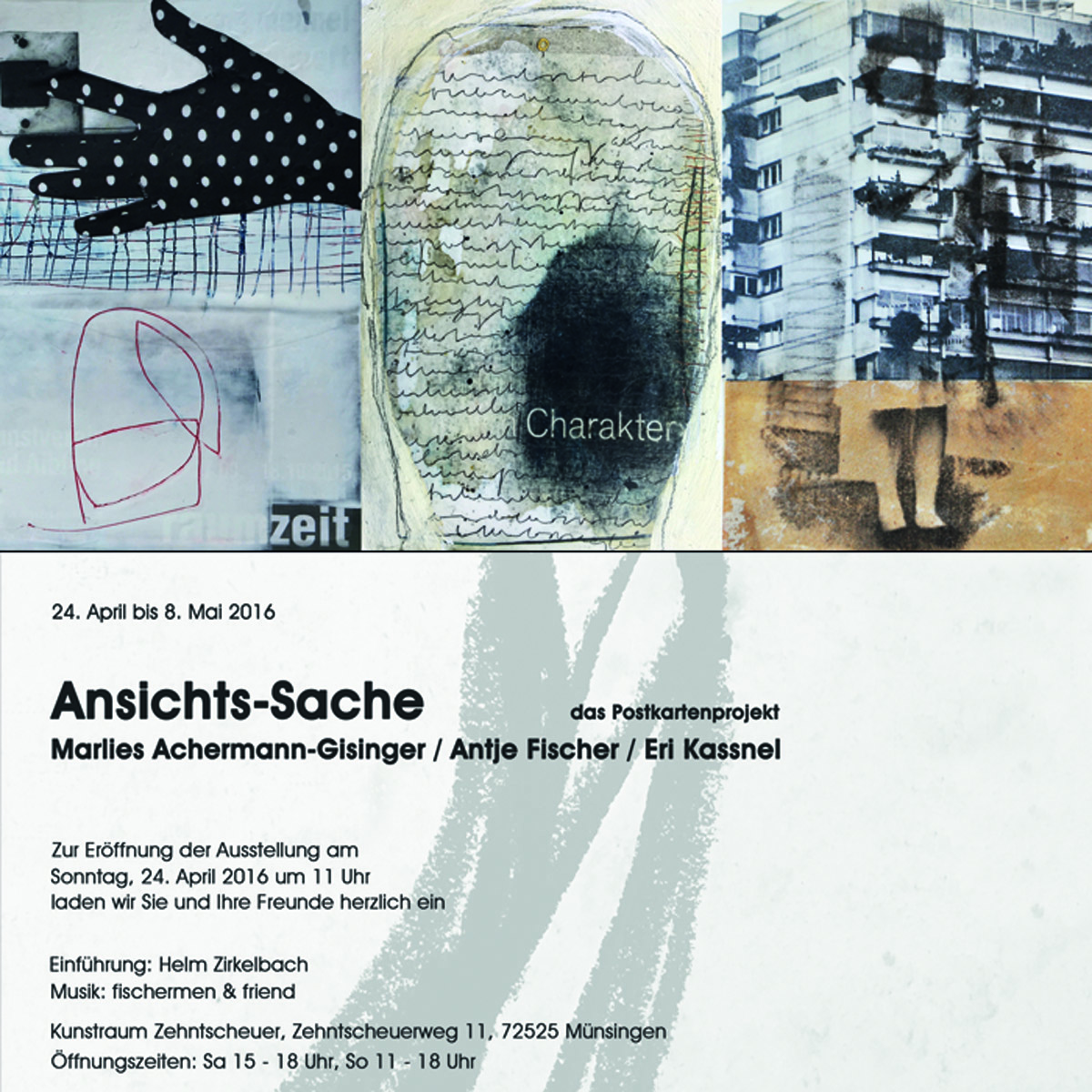Excerpt from the opening speech by Helm Zirkelbach on the occasion of the exhibition “Ansichtssache” in Münsingen:
With the 365 art cards on black wooden panels by Eri Kassnel, a third, completely different handwriting enters the art game of the cards and we can easily recognise many religious motifs, images of saints and representations of the Mother of God and the Child Jesus. The artist begins to interweave these with photographs from her own past, thus connecting in a fascinating way living people she knows herself, like her own mother, and interweaves them with the Mother of God, places her in the centre, or puts another larger head on the representation of the saint, which irritates and makes me wonder with what ease this seems to succeed.
The good Catholic believes in a God who is a person, but this cannot be proven and one must believe in it in order to then recognise it as reality. The soul is then the symbol that circumscribes the unity of the human and divine personhood. Eri Kassnel’s depictions of this mother-son bond show this balancing act for me.
For me, Eri Kassnel’s depictions of this mother-son bond show this tightrope walk by inserting people from her environment, for example, in a gold-studded monstrance in a shadowy way and thus releasing them for adoration and veneration.
Or the large black-framed collage over here on the wall, on whitewashed newspaper appears the black-and-white photograph of a woman, perhaps with her two daughters? They are all wearing three dresses made of the same fabric, in the middle is a postcard of a monstrance with figures of saints, above it is handwritten Trinity. Does the Trinity refer to the clothing of the women or to the arrangement and divinity of the persons, that is left to us viewers to decide.
Sometimes in the middle of summer there is autumn, sometimes in the middle of the day something nocturnal, like the negative image of an old tree, I am fascinated and I feel rigid, as if without joints, as if without limbs.
The child, the infant Jesus, is exchanged with perhaps the brother or someone else and it becomes comprehensible to all of us that the infant can only develop by trusting in its mother, only by trusting in another person, can its own personhood develop fruitfully.
The artist also shows us that this cannot always succeed by letting robotic demons appear, by completely blackening and veiling the mother, by inserting a multitude of disturbances into the relationship and we suspect that we ourselves carry an enormous number of disturbances within us.
This seems to me to be the central message of Eri Kassnel’s gruelling and thoroughly disturbing iconic images. But, take a look for yourself and find out where this unusual journey is going.

[apvc_embed type=”customized” border_size=”2″ border_radius=”5″ background_color=”” font_size=”14″ font_style=”” font_color=”#938fc5″ counter_label=”Visits:” today_cnt_label=”Today:” global_cnt_label=”Total:” border_color=”” border_style=”solid” padding=”20″ width=”220″ global=”true” today=”true” current=”true” icon_position=”” widget_template=”schattenbox” ]


